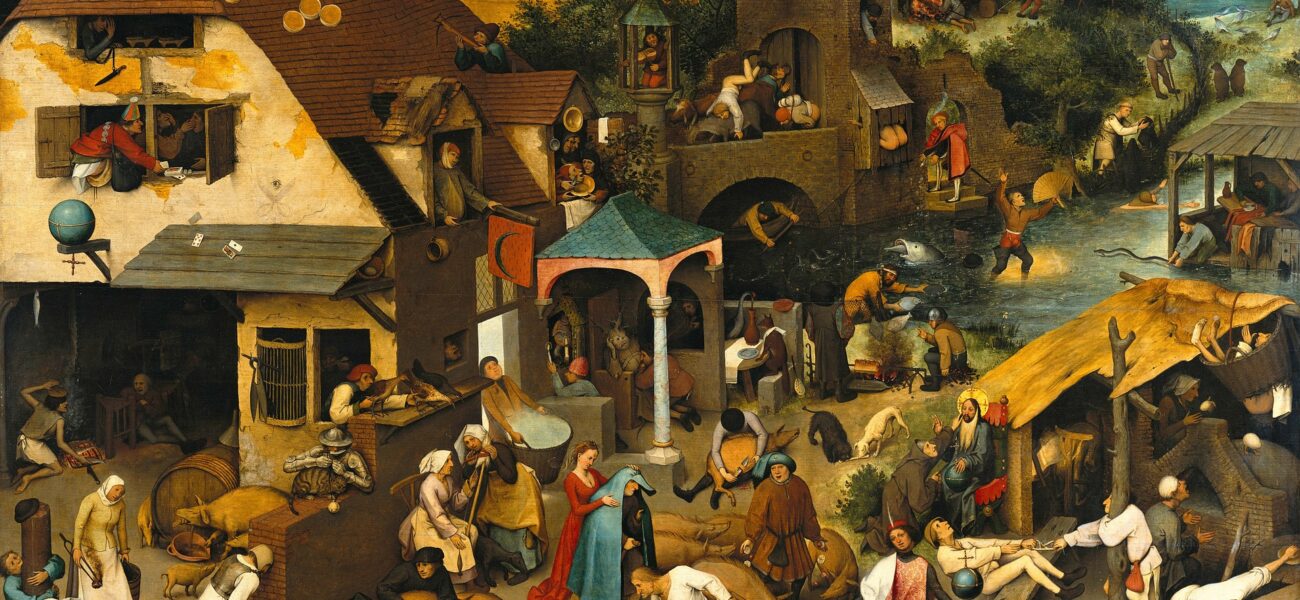
A Summit of Masterpieces
About half of all the extant works by Pieter Bruegel the Elder are on show in the Bruegel exhibition in Vienna.
Event Date:
Jun 11 - Jun 20 at 12:00 am
Location:
Kunsthistorischen Museum,
Babenbergerstraße 1,
Wien
For the first time ever, a single exhibition unites Bruegel’s works in different media. Paintings, drawings and prints from different parts of the world meet at the Kunsthistorisches Museum Vienna. This was made possible by international collaboration between scholars, experts and lenders.
Paintings, drawings and prints from all over the world are meeting at the Kunsthistorisches Museum Vienna.
We would like to thank the many institutions and lenders who have generously loaned us these fragile artworks. Bruegel’s works are among their most precious holdings..
 Three early paintings by Bruegel are often referred to as Wimmelbilder (busy pictures that are teeming with countless figures). They are The Battle between Carnival and Lent (1559), The Proverbs (1559, on view in Berlin), and Children’s Games from 1560.
Three early paintings by Bruegel are often referred to as Wimmelbilder (busy pictures that are teeming with countless figures). They are The Battle between Carnival and Lent (1559), The Proverbs (1559, on view in Berlin), and Children’s Games from 1560.
One of the characteristics shared by these Wimmelbilder is an elevated viewpoint. The raised line of the horizon creates a bird’s eye view: gazing down on the busy scene, we discover a wealth of details.
Particularly interesting is the receding perspective of the row of houses that line the street at top right, which is reminiscent of Sebastiano Serlio (1475-1554). He wrote treatises on architecture that were published by Bruegel’s father-in-law Pieter Coecke van Aelst in the sixteenth century. In these treatises, Serlio also discussed ’scenery’ and ‘stage design’ for painters.
Another, obvious, seminal aspect of these Wimmelbilder is the almost unbelievable number of figures and details that are just waiting to be discovered.
The Post-Impressionists were dissatisfied with what they felt was the triviality of subject matter and the loss of structure in Impressionist paintings, though they did not agree on the way forward. Georges Seurat and his followers concerned themselves with pointillism, the systematic use of tiny dots of colour. Paul Cézanne set out to restore a sense of order and structure to painting, to “make of Impressionism something solid and durable, like the art of the museums”. He achieved this by reducing objects to their basic shapes while retaining the saturated colours of Impressionism. The Impressionist Camille Pissarro experimented with Neo-Impressionist ideas between the mid-1880s and the early 1890s. Discontented with what he referred to as romantic Impressionism, he investigated pointillism, which he called scientific Impressionism, before returning to a purer Impressionism in the last decade of his life. Vincent van Gogh used colour and vibrant swirling brush strokes to convey his feelings and his state of mind.
Although they often exhibited together, Post-Impressionist artists were not in agreement concerning a cohesive movement. Yet, the abstract concerns of harmony and structural arrangement, in the work of all these artists, took precedence over naturalism. Artists such as Seurat adopted a meticulously scientific approach to colour and composition.
Younger painters during the early 20th century worked in geographically disparate regions and in various stylistic categories, such as Fauvism and Cubism, breaking from Post-Impressionism.
Last modified: May 17, 2023